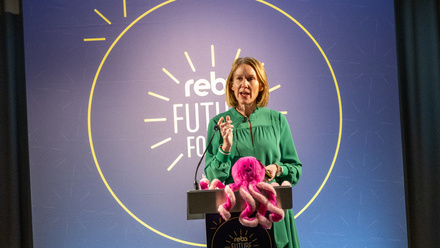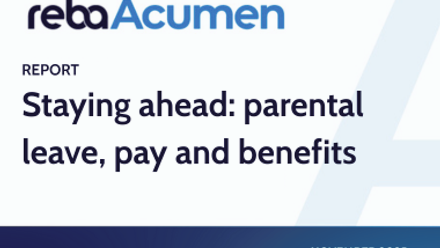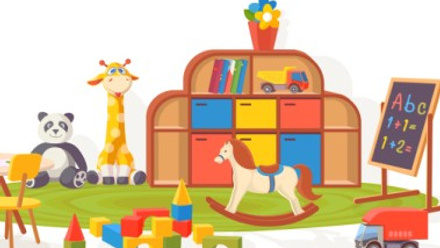Adapting employee benefits for evolving family structures
Single parents, same-sex couples, blended families, multigenerational households and chosen families are now an integral part of society.
Yet many workplace benefits still reflect a narrow, traditional view of what a family “should” look like.
England’s Children’s Commissioner found that 44% of children born at the start of the 21st century did not grow up in a nuclear family, compared to just 21% of children born in 1970.
The message is clear: the traditional family model is no longer the norm — and hasn’t been for some time.
So why are so many employee benefits still designed around it?
As organisations compete for talent in an increasingly diverse, multigenerational and values-driven workforce, modernising benefits isn’t just a DEI issue, it’s a strategic imperative.
Employers who grow with their people can foster belonging, boost retention, and build meaningful support systems.
Those who don’t risk leaving whole groups of employees behind.
Family-friendly benefits matter
Family-friendly benefits have long been recognised as a cornerstone of effective talent attraction and retention.
More than six out of ten (65%) of UK candidates say employee benefits are a crucial factor when evaluating job offer.
But as family dynamics continue to evolve, so too must the structures that support them.
A poll of Employee Benefits readers found that 57% of organisations identify enhanced maternity, paternity, and adoption leave as the most valued family-friendly benefit among their workforce.
Forward-thinking employers are now extending their benefits frameworks to reflect the full spectrum of modern caregiving roles.
Examples include:
- Family planning and fertility support: One in six people globally face infertility. Since fertility treatment is costly and emotionally taxing — offering fertility benefits helps level the playing field for all employees, including LGBTQ+ and single parents.
- Adoption and surrogacy reimbursement: Financial support for adoption and surrogacy recognises diverse paths to parenthood and removes barriers for non-traditional families.
- Broader caregiving leave and mental health support: 71% of carers experience poor mental or physical health. Many employees are part of the "sandwich generation" — supporting both children and aging parents. Employers offering carer leave, mental health resources and flexibility enable staff to manage their responsibilities with dignity.
- Inclusive bereavement leave: Traditional bereavement policies often only cover immediate biological relatives. More inclusive policies recognise the impact of losing a stepparent, co-parent, or a chosen family member who played a central role in someone’s life.
- Flexible childcare support: Families today include single parents, co-parents, grandparents raising grandchildren, and more. Support such as backup childcare, subsidies, and adaptable working hours is essential for enabling all caregivers to thrive at work.
Benefits frameworks that only recognise legal or biological relationships risk excluding employees with real care responsibilities.
What’s holding traditional benefits structures back?
Many legacy benefits systems are rooted in outdated assumptions.
Specifically, they tend to be:
- Overly rigid: Excluding stepchildren, in-laws, and chosen family members from eligibility.
- Gender-biased: Prioritising maternity leave while sidelining fathers, adoptive parents, and non-birthing partners.
- Inflexible: Failing to adapt to changing life stages such as divorce, elder care, or blended families.
Rethinking your benefits: Five areas for innovation
To be truly inclusive and equitable, modern benefits must support the full range of caregiving roles and family models — reflecting how people live, not just how policies were once written.
Here are five areas in which you can shift your benefits into the 21st century.
1. Family leave policies
- Equal parental leave for all caregivers, regardless of gender or biology
- Leave for fertility treatment, surrogacy, or adoption processes
- Carer leave extended beyond immediate family
2. Healthcare and insurance
- Inclusive language and eligibility criteria that cover chosen family, older dependents, and domestic partners
- Mental health support tailored to family hardships and care burdens
3. Flexible working
- Flexibility designed around life needs — school runs, elder care, or shared parenting
- Remote/hybrid options that account for caregiving roles
4. Lifestyle benefits
- Family planning support (IVF, egg freezing, surrogacy)
- Emergency child and elder care services
- Access to parenting coaches or care concierge services
5. Financial wellbeing
- Financial education or planning tools for multigenerational households
- Savings schemes or insurance that support broader family needs
Next steps
If you want to evolve your benefits to reflect real life, start with these four actions:
- Audit your current benefits: Are they unintentionally exclusive?
- Redefine eligibility: Base policies on caregiving roles, not just legal or biological status. For example, employees may have caregiving responsibilities for stepchildren, foster children, chosen family or close friends, elderly parents, in-laws, or siblings who require support.
- Use inclusive language: Say "parental leave" instead of "maternity leave"; "partner" instead of "husband/wife."
- Listen to your people: Use surveys or focus groups to understand real-world care responsibilities.
Final word: Inclusive benefits are smart benefits
Recognising the diverse realities of family life is no longer just about fairness — it’s a competitive advantage. Inclusive, flexible benefits improve wellbeing, boost retention, and reflect the values of modern employers.
If you want to attract and retain top talent in today’s workforce, your benefits must reflect how people actually live — not how they used to live.
Supplied by REBA Associate Member, Avantus
Flexible Benefits & Technology specialist providing online, highly configurable platforms to Customers and Intermediaries worldwide.








